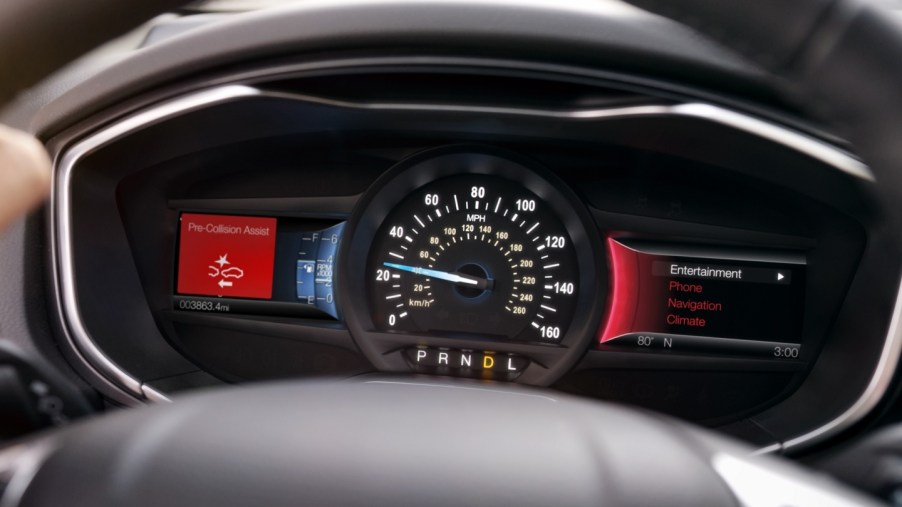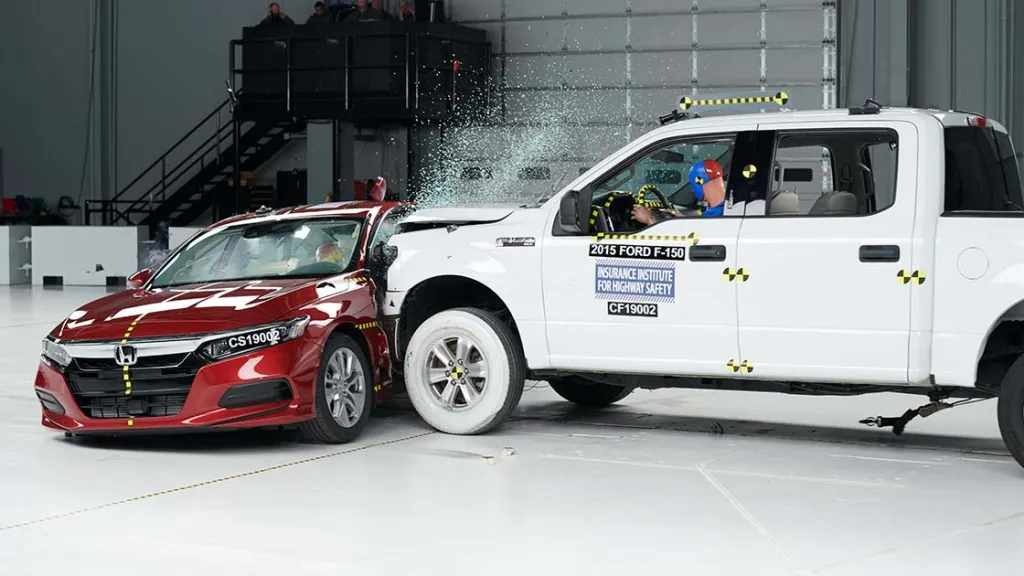
Ford Is the Worst at Telling Parents About Teen Safety Features in New Study
With more vehicles offering extensive safety features, it’s more important than ever that drivers understand how they work. Particularly teen drivers, who rely upon their parents to choose a safe car. However, while these advanced driver-assistance features can reduce parental worries, they can also cause headaches. Especially if, as a recent IIHS study says about Ford’s features, parents and teens don’t know how to use them.
What the IIHS study says about Ford and other brands

In its recent study, the IIHS targeted 4 brands with dealerships in the metro-DC area: Ford, Chevrolet, Hyundai, and Kia. IIHS researchers visited each dealership during the week and waited for a salesperson to approach.
Once a conversation started, the researchers stated they wanted to buy a safe first car for their teenage son. The interview then progressed through several stages. Each leaned on the brand’s safety packages and safety-related ads more heavily. Once the interview concluded, the researchers told the salespeople the real reason for the visit. They then asked the salespeople how much on-the-job training they’d received on their brand’s safety features.
Admittedly, 40 total interviews are a small sample. However, the results are still a bit disconcerting. Of those interviewed, only 3 mentioned their brand’s safety features immediately after the conversation started. 26 waited until after the researchers mentioned a safety-related ad before explaining teen safety features. Plus, although many were able to discuss these features in general terms, few actually knew how they worked.
But why did Ford receive special mention? The study was based around teen-focused safety features, such as seatbelt reminders, programmable speed-limiting key fobs, and GPS-based travel limits. Ford’s MyKey system has offered speed limits, inability to disable stability control and seatbelt alerts since the 2010 model year.
However, Ford doesn’t list any MyKey info on its website. Chevrolet, in contrast, has a dedicated ‘Teen Driver’ subsite. And in a 2018 survey of 1500 Ford owners with MyKey systems, 39% didn’t even know they had it equipped.
But most of those who did know about and use it reported they learned about it from the dealership. So, if the dealer rep doesn’t explain it, it may never be used. And that has huge implications for all road users.
Everyone needs to understand car safety features
The more cars offer standard ADAS features, the more drivers come to rely on them. But misconceptions about these safety features could have dangerous consequences. Not just to drivers, but pedestrians and cyclists.
AAA reports almost 80% of drivers don’t know the limitations of their vehicle’s blind-spot monitoring systems. Such as the inability to 100%-accurately track pedestrians and cyclists. Forbes reports roughly 40% of drivers thought automatic emergency braking and forward-collision warning were the same things—which they’re not.
It doesn’t help, Consumer Reports explains, that the same safety feature can have different automaker-specific names. Some GM cars, for instance, call blind-spot monitoring ‘Lane Change Alert.’ Honda, on the other hand, calls it ‘Blind Spot Information System.’ Then there’s Tesla’s Autopilot, which has often caused confusion. Despite the name, it is emphatically not self-driving. As of this writing, there is no self-driving car on sale anywhere.

Adding to the problem is modern vehicles’ size problem. With more trucks and SUVs on the road, the IIHS has had to increase its crash tests’ severity to get accurate data. The NHTSA, though, hasn’t kept up. That’s how you get something like the Jeep Wrangler tipping-over during its front overlap test. And the larger the vehicle, the more drivers are forced to rely on tech-based safety features. Which means they have to know how to use them.
These features don’t replace good training
Ultimately, both for teen and older drivers, ADAS features are a supplement, not a replacement, for proper training. Yes, pedestrian-detection and cross-traffic alert will increase your chances of avoiding a collision. But so will driving so you avoid a situation which could lead to a collision.
You, the person behind the wheel, are responsible for keeping yourself and everyone around you safe. That means knowing what your car can and cannot do. Electronic sensors can be obscured by ice, snow, and even dirt. And an electronic safety feature is only as good as its programming. That means, even if a dealership rep doesn’t inform you about those features, you need to understand them.
That’s the best way to keep everyone, teens and adults alike, safe.
Follow more updates from MotorBiscuit on our Facebook page.


